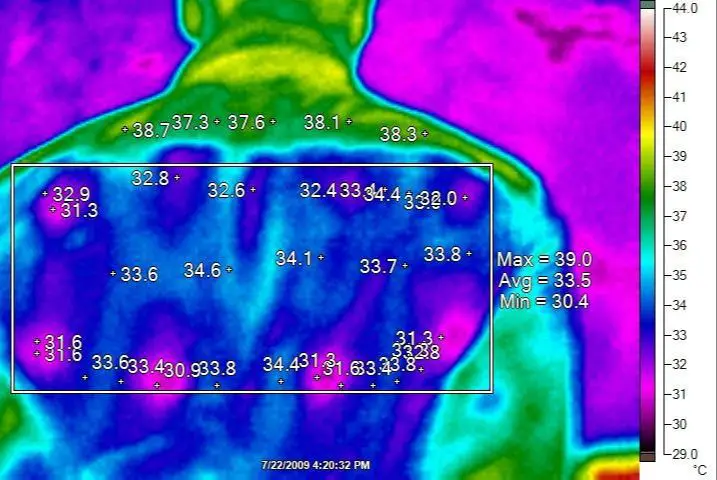How Much Energy Can A Human Take?

Energy capacity in humans refers to the maximum amount of energy a person can expend or utilize in a given period of time. This is dependent on a variety of factors including basal metabolic rate, physical activity level, diet, environmental conditions, demographics like age and gender, and health status.
This article will provide an overview of the key components that contribute to human energy expenditure, including an analysis of metabolic rate, exercise, thermic effect of food, environmental impacts, age and gender differences, health conditions that affect energy levels, changes during pregnancy and lactation, and the known limits of energy expenditure.
Basal Metabolic Rate
The basal metabolic rate (BMR) is the minimum number of calories the body needs to perform essential, life-sustaining functions while at rest (1). It accounts for 50-70% of total daily energy expenditure in sedentary individuals and represents the number of calories required to keep vital organs functioning normally (2).
BMR can be estimated using prediction equations based on a person’s age, sex, weight, and height. According to research, the average adult BMR is between 1200-1800 calories per day for women and 1500-2000 calories per day for men (3). BMR declines by 1-2% per decade starting in a person’s 30s due to the natural loss of lean body mass that accompanies aging (1).
Sources:
(1) https://www.healthline.com/health/what-is-basal-metabolic-rate
(2) https://www.sciencedirect.com/topics/medicine-and-dentistry/basal-metabolic-rate
(3) https://www.garnethealth.org/news/basal-metabolic-rate-calculator
Physical Activity
Physical activity has a major impact on energy expenditure. The number of calories burned during exercise depends on the type, intensity, and duration of the activity. According to research from NutriStrategy, high-intensity cardio activities like running burn the most calories per hour. For example, a 155 lb person will burn around 1000 calories per hour running at a 10 min/mile pace. Weight lifting and strength training burn fewer calories per hour but help build muscle which increases resting metabolic rate.
In general, cardiovascular exercise such as jogging, biking, swimming, etc. burns more calories per hour compared to resistance exercise like weight lifting. However, combining cardio and strength training is ideal for maximizing calorie burn and improving overall fitness. According to VeryWell Fit, a 155 lb person doing 30 minutes of vigorous cardio would burn around 300 calories, while 30 minutes of strength training would burn around 170 calories.
While high-intensity cardio uses more energy during the activity, strength training helps build muscle so the body burns more calories at rest. A balanced exercise program that includes both cardio and strength training is recommended for optimal health and energy expenditure.
Thermic Effect of Food
The thermic effect of food (TEF) is the amount of energy the body uses to digest, absorb, and metabolize the nutrients in food. The thermic effect accounts for about 10% of total energy expenditure in healthy adults eating a mixed diet (Source).
When you eat food, your metabolic rate increases as your body has to break down macronutrients like carbohydrates, proteins and fats during digestion. This causes your body to burn calories. The thermic effect is highest for protein, with 20-30% of protein calories being burned during digestion and absorption. Carbohydrates have a thermic effect of 5-15%, while fats have the lowest at 0-3% (Source).
Factors like food composition, meal frequency and size, energy intake, and body composition can influence the thermic effect of food and total energy expenditure.
Environmental Factors
The environment that a person is in can have significant effects on their energy expenditure. Specifically, heat, cold, and high altitudes can impact how much energy a body uses. In hot environments, the body has to work harder to maintain a normal core body temperature. Sweating and increased blood circulation to the skin require more energy expenditure (Environmental impact of energy, n.d.). Cold environments require extra energy to generate heat through increased muscle tension and shivering. At high altitudes, the body has to work harder to take in oxygen due to lower air pressure. This increases respiratory and heart rates, using more energy (Learn about energy…, n.d.). Adaptations can help reduce the impacts of environmental extremes, but they still require the body to expend more energy than in comfortable conditions.
Age and Gender
Energy needs vary significantly between different ages and genders. Studies show that energy expenditure tends to be higher in males compared to females across all age groups (Klausen et al., 1997; Mlcak et al., 2006).
In children and adolescents, energy needs are higher due to growth and development. Male children tend to have higher energy expenditures than female children (Mlcak et al., 2006).
In adults, men generally have higher energy requirements than women, likely due to having more muscle mass and a higher metabolism (Klausen et al., 1997). Energy needs tend to decline with age in both men and women as metabolism slows and activity levels decrease.
During pregnancy and lactation, women have increased energy needs to support fetal growth and milk production. Recommended calorie intakes can be up to 300-500 extra calories per day during pregnancy and 500 extra calories for breastfeeding (Klausen et al., 1997).
Overall, gender and age significantly impact energy requirements, with needs varying across the lifespan. Understanding these differences can help guide personalized nutrition recommendations.
Health Conditions
Certain health conditions can increase a person’s energy needs. Diseases like cancer, cystic fibrosis, and HIV/AIDS increase resting energy expenditure. This is because the immune system works harder to fight illness, using more energy. Heart failure also increases energy needs due to the heart working harder to pump blood (1).
Other conditions like hyperthyroidism increase metabolism, requiring more energy expenditure. Injuries like burns lead to increased protein turnover and immune activity, also raising energy needs.
Overall, diseases place stress on the body, diverting energy usage towards survival and recovery. This increases daily energy expenditure, sometimes significantly. Meeting these increased needs with proper nutrition is vital for the health of individuals with conditions causing higher energy requirements.
Pregnancy and Lactation
Pregnant and lactating women have significantly higher energy needs compared to non-pregnant women. During pregnancy, extra energy is required for fetal growth and maternal tissues, particularly in the second and third trimesters. According to research, the increased energy needs during the second trimester are approximately 340 kcal/day, and 452 kcal/day during the third trimester (Source).
The energy cost of lactation is also substantial. Exclusive breastfeeding requires an estimated 500 kcal/day above pre-pregnancy energy needs to support milk production (Source). The increased energy expenditure during pregnancy and lactation underlines the importance of adequate caloric intake from nutrient-dense foods to support the health of both mother and baby.
Limits of Energy Expenditure
Research has shown that there are limits on how much energy humans can expend, even during extreme endurance challenges. According to a 2019 study published in Science Advances, humans appear to have an upper limit of about 2.5 times their basal metabolic rate (BMR) for sustained energy expenditure (Thurber et al., 2019). This means that for a person with a BMR of 1500 calories per day, they may only be able to sustain about 3750 calories per day at their limit.
This metabolic limit seems to hold true even for elite athletes participating in extreme endurance events like marathons or Tour de France cycling. No matter how much training they do, humans have not been able to exceed about 2.5 x BMR for daily energy expenditure. Researchers suggest this maximum energy budget is constrained by the capacity of the digestive system to absorb nutrients and metabolize energy. So while the cardiovascular and musculoskeletal systems may be capable of greater energy output, the alimentary system caps humans’ ability to take in and use energy.
While the exact biochemical mechanisms behind this metabolic limit are still being studied, it appears to be a fundamental constraint on human endurance. Pushing substantially beyond 2.5 x BMR, such as during famine or periods of extreme stress, can lead to dangerous weight loss, muscle wasting, and fatigue. So knowing this upper limit can help athletes and people in physically demanding jobs optimize training and nutrition without endangering their health.
Summary
Human energy expenditure is a complex area with many influencing factors. To recap, the main points are:
- Basal metabolic rate, the energy needed for basic body functioning, accounts for the majority of daily calorie burn and decreases with age.
- Physical activity levels greatly impact energy expenditure, with intense exercise substantially increasing daily energy needs.
- Digesting food requires energy based on the thermic effect of nutrients, with protein requiring the most energy to break down.
- Environmental temperature and climate can influence energy needs, with cold weather and high altitudes increasing calorie requirements.
- Age, gender, pregnancy, and health conditions all affect energy needs and ability to expend energy.
- Extreme physical activity has limits, with diminishing returns at very high levels of exercise. Most adults can safely expend 2000-4000 calories per day through a combination of metabolic processes, activity, and digestion.
In summary, human energy expenditure depends on a variety of interrelated factors, with considerable variability among individuals. Understanding your unique needs and capacities can help optimize diet, activity and health.






